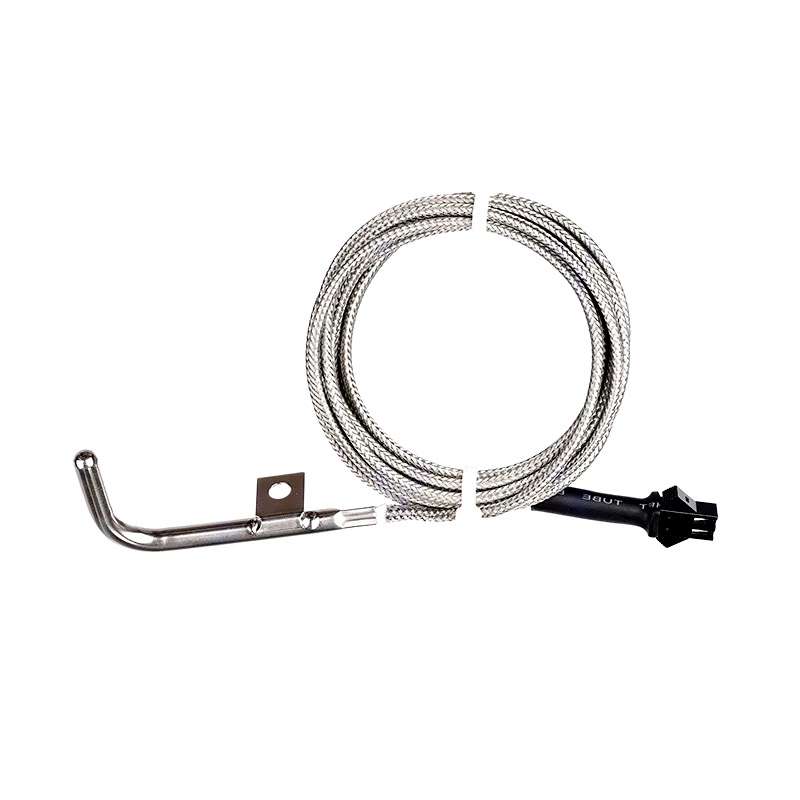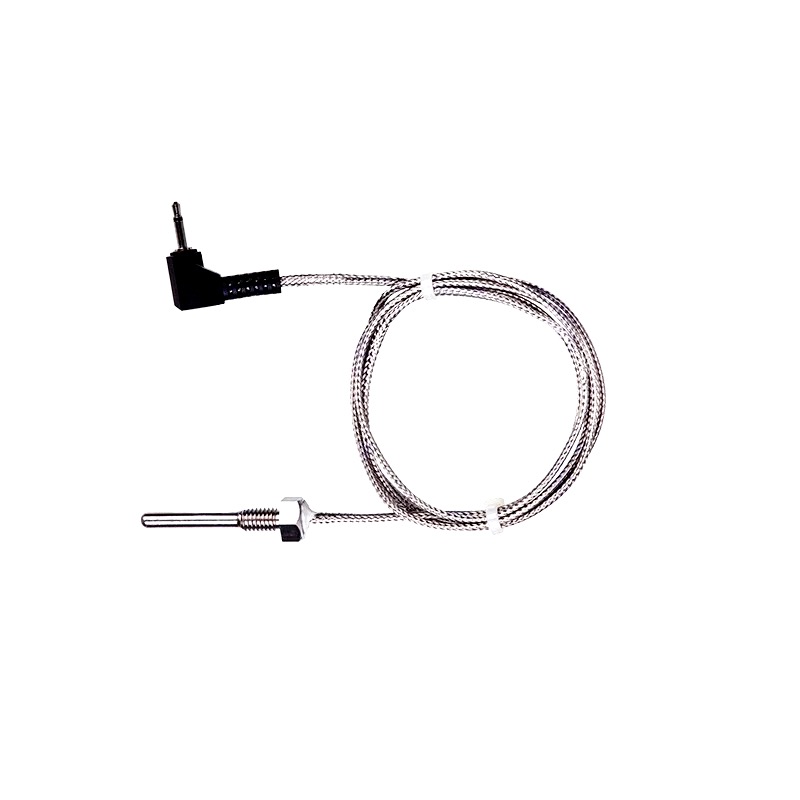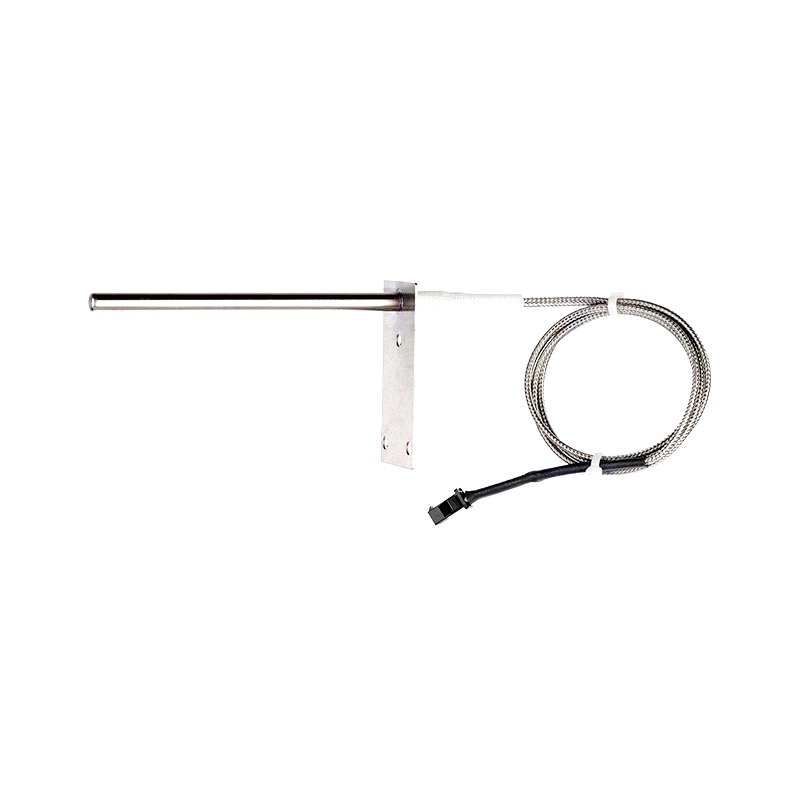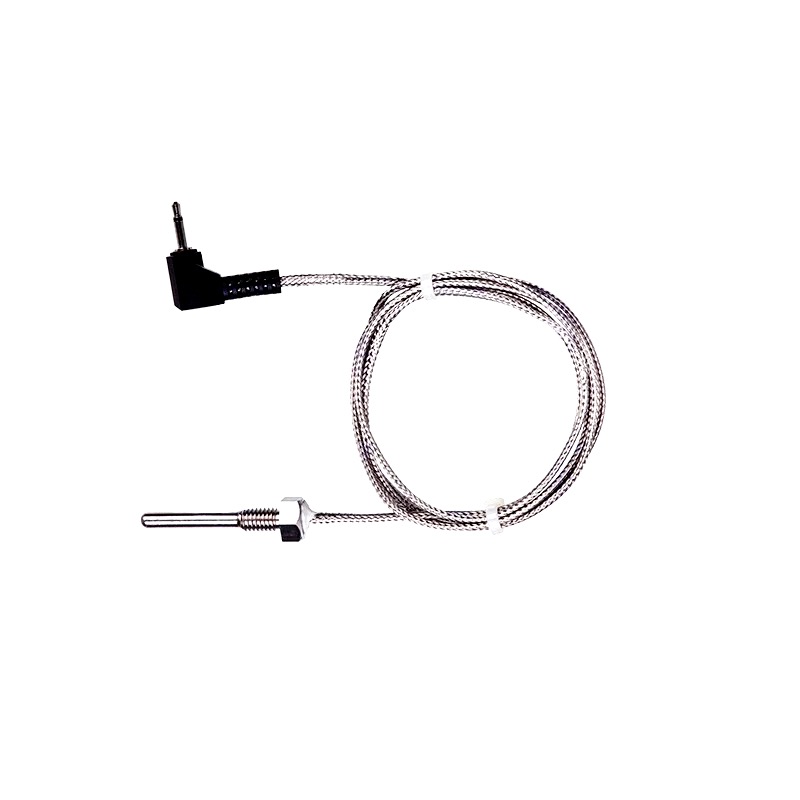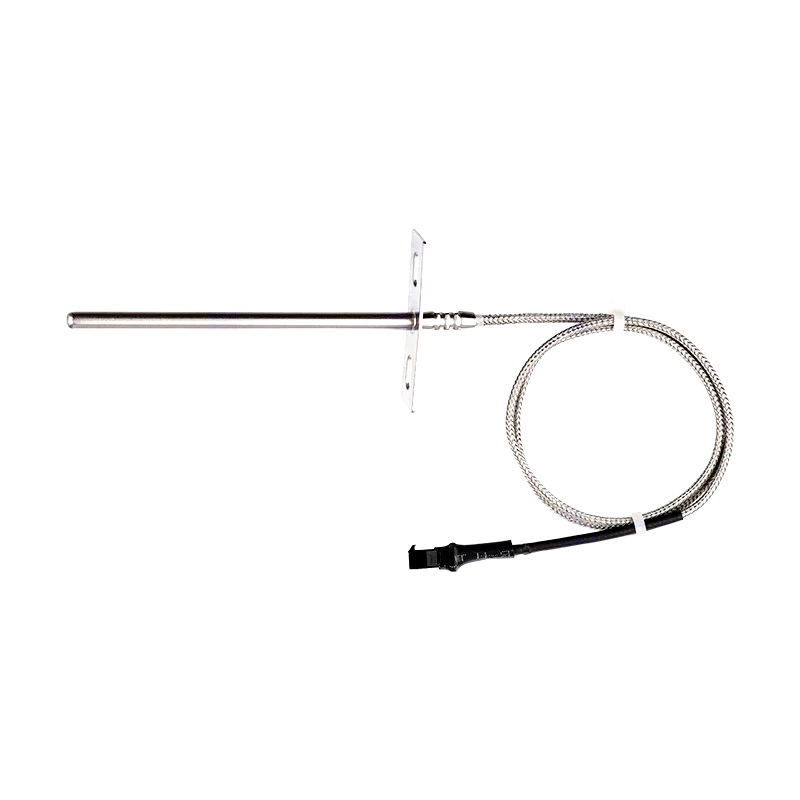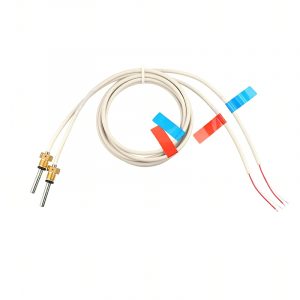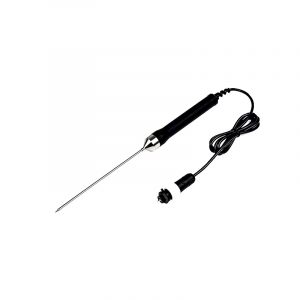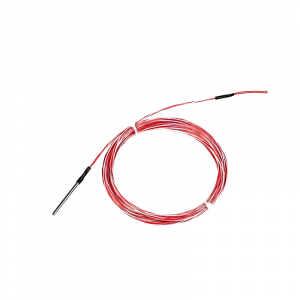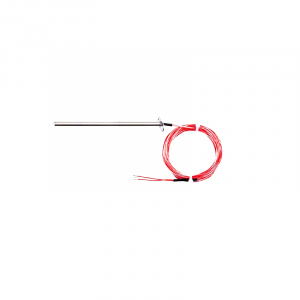It can be customized with different working requirements and uses 380℃PTFE cable or 450℃ glass-fiber mic cable. Uses a one-piece insulated ceramic tube to prevent short circuits, insurance of voltage-resistance, and insulation performance. Adopts food-grade SS304 tube with RTD sensing chip in, to ensure product work normally at 500℃.
The Features of Platinum Resistance Temperature Sensor For Heat Meter
| Recommended | PT100, PT500, PT1000 chip |
|---|---|
| Accuracy | class A, class B |
| Working Temperature range | -60℃~+300℃-60℃~+380℃-60℃~+450℃ |
| Insulation Voltage | 1500VAC, 2sec |
| Insulation Resistance | 500VDC ≥100MΩ |
| Characteristics Curve | TCR=3850ppm/K |
| Long-term stability: The hange rate is less than 0.04% when working 1000 hours at maximum temperature | |
| 380℃ SS304 braided cable or glass-fiber mica cable is recommended | |
| Communication mode: two-wire system, three-wire system, four-wire system | |
| Product is compatible with RoHS and REACH certifications. | |
| SS304 tube is compatible with FDA and LFGB certifications. | |
The Applications of Platinum Resistance Temperature Sensor For Heat Meter
Grill, smoker, oven, electric oven, and electric plate
The advantages of Platinum Resistance Temperature Sensor For Heat Meter
Ease of shaping and machining: Platinum is a highly valuable and desirable metal, very soft and malleable. This property of the metal makes it easy to machine and stretch to the desired shape according to RTD specifications without compromising its dimensional stability.
Unresponsive: This heavy, precious, silver-white metal has been described as a precious metal because of its inert nature. It is resistant to most environmental elements and will not react with air, water, heat or most chemicals and common acids.
Durability: Platinum is one of the most stable elements, unaffected by external loads, mechanical vibrations and shocks. This feature is one of the added advantages since RTD temperature sensors are often exposed to such harsh environments during industrial operation.
High temperature resistance: Platinum resistance temperature detectors work consistently over a wide temperature range. It provides increased accuracy even when exposed to temperatures ranging from -200°C to 600°C.

